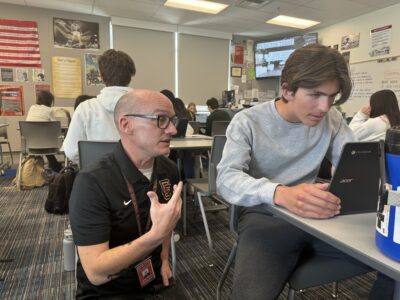Rep. Steve Knight’s “No Hero Left Untreated Act” — which would begin a one-year pilot program to help veterans suffering post-traumatic stress and other brain issues — has gained bipartisan support in the U.S. Senate and appears on target to become reality in 2017.
Knight’s bill, which passed the House in November, was taken up by the Senate earlier this week, as Sens. David Perdue, R-Ga., and Gary Peters, D-Mich., introduced companion legislation — S.3540.
The bill calls for a pilot program under the auspices of the Department of Veterans Affairs to use new, high-tech but still experimental neurological treatments on veterans.
The technology is known as Magnetic Resonance Therapy, or MRT. Simply put, MRT identifies specific areas of the brain that are out of sync or malfunctioning as a result of PTS or traumatic injury, and addresses those areas.
The technology was pioneered at the Brain Treatment Center of Newport Beach, which is affiliated with the USC Center for Neurorestoration.
“I am very glad that the No Hero Left Untreated Act earned bipartisan support in the Senate, and I thank Senators Perdue and Peters for introducing a companion measure,’’ said Knight, a Republican of Palmdale.
“This legislation would provide real solutions and hope for our men and women in uniform who are suffering, and has widespread support within the veteran community.
“I look forward to continuing our momentum and seeing this bill signed into law next Congress.’’
The Senate has recessed until the new year, but Knight is hoping his bill gets a vote early in the next session.
According to Daniel Outlaw, a Knight aide in Washington, “With the bipartisan support we now have in the Senate, plus the support of a lot of veterans group, we’re talking a good trajectory for next year.”
MRT technology basically provides a motion picture of the brain’s functionality the way an EKG can monitor a beating heart, compared to the static, snapshot way an X-ray merely looks an organ’s structure.
(661) 287-5525








